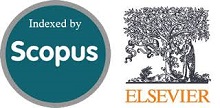A Formula for Predicting Primary Settlement of Tropical Highly Organic Soil and Peat in the Field
Abstract
Â
Doi: 10.28991/CEJ-2024-010-11-03
Full Text: PDF
Keywords
References
Dhowian, A. W., & Edil, T. B. (1980). Consolidation Behavior of Peats. Geotechnical Testing Journal, 3(3), 105–114. doi:10.1520/GTJ10881J.
ASTM D4427-18 (2023). Standard Classification of Peat Samples by Laboratory Testing. ASTM International, Pennsylvania, United States. doi:10.1520/D4427-18.
Mankinen, GW., & Gelfer, B. (1982). Comprehensive use of peat in the U.S.S.R. DOE. Fifth Technical Conference on Peat. Bethesda, 28-29 April, 1982, Bethesda, United States.
Chimner, R. A., & Ewel, K. C. (2005). A tropical freshwater wetland: II. Production, decomposition, and peat formation. Wetlands Ecology and Management, 13(6), 671–684. doi:10.1007/s11273-005-0965-9.
Könönen, M., Jauhiainen, J., Laiho, R., Spetz, P., Kusin, K., Limin, S., & Vasander, H. (2016). Land use increases the recalcitrance of tropical peat. Wetlands Ecology and Management, 24(6), 717–731. doi:10.1007/s11273-016-9498-7.
Den Haan, E. J. (1977). An overview of the mechanical behaviour of peats and organic soils and some appropriate construction techniques. Conference on Recent Advances in Soft Soil Engineering, 5-7 March, 1997, Kuching, Malaysia.
Noor, M., & Masganti, A. F. (2014). Formation and characteristics of Indonesian tropical peat. Lahan Gambut Indonesia. Pembentukan, IAARD Press, Jakarta, Indonesia. (In Indonesian).
Hoyos-Santillan, J., Lomax, B. H., Large, D., Turner, B. L., Boom, A., Lopez, O. R., & Sjögersten, S. (2015). Getting to the root of the problem: litter decomposition and peat formation in lowland Neotropical peatlands. Biogeochemistry, 126(1–2), 115–129. doi:10.1007/s10533-015-0147-7.
Ratnayake, A. S. (2020). Characteristics of Lowland Tropical Peatlands: Formation, Classification, and Decomposition. Journal of Tropical Forestry and Environment, 10(1), 1-6. doi:10.31357/jtfe.v10i1.4685.
Travis, K., Izzati Nazra, John Thor, & William Adam. (2023). Analysis of Land Subsidence in Peatlands in the Awareness Area of Pekanbaru, Riau, Indonesia. Journal of Geoscience, Engineering, Environment, and Technology, 8(1), 62–69. doi:10.25299/jgeet.2023.8.1.13461.
Anda, M., Ritung, S., Suryani, E., Sukarman, Hikmat, M., Yatno, E., Mulyani, A., Subandiono, R. E., Suratman, & Husnain. (2021). Revisiting tropical peatlands in Indonesia: Semi-detailed mapping, extent and depth distribution assessment. Geoderma, 402. doi:10.1016/j.geoderma.2021.115235.
Ahmad, A., Sutanto, M. H., Al-Bared, M. A. M., Harahap, I. S. H., Abad, S. V. A. N. K., & Khan, M. A. (2021). Physio-Chemical Properties, Consolidation, and Stabilization of Tropical Peat Soil Using Traditional Soil Additives — A State of the Art Literature Review. KSCE Journal of Civil Engineering, 25(10), 3662–3678. doi:10.1007/s12205-021-1247-7.
Mochtar, N. E., Prativi, A., & Yogyanta, D. A. (2024). Behavioral Change of the Bacterially Decomposed Fibrous Tropical Peat Stabilized with Lime CaCO3 and Fly Ash. Advances in Civil Engineering Materials, ICACE 2023, Lecture Notes in Civil Engineering, Springer, Singapore. doi:10.1007/978-981-97-0751-5_70.
Yulianto, F. E., Harwadi, F., & Wardani, M. K. (2014). the Effect of Water Content Reduction To Fibrous Peat Absorbent Capacity and Its Behaviour. 9th International Symposium on Lowland Technology, September 29-October 1, 2014, Saga, Japan.
Laiho, R. (2006). Decomposition in peatlands: Reconciling seemingly contrasting results on the impacts of lowered water levels. Soil Biology and Biochemistry, 38(8), 2011–2024. doi:10.1016/j.soilbio.2006.02.017.
Edil, T. B., Fox, P. J., & Lan, L. T. (1991). Observational procedure for settlement of peat. Geo-Coast 91, 3-6 September, 1991, Yokohama, Japan.
Mesri, G., Stark, T. D., Ajlouni, M. A., & Chen, C. S. (1997). Secondary Compression of Peat with or without Surcharging. Journal of Geotechnical and Geoenvironmental Engineering, 123(5), 411–421. doi:10.1061/(asce)1090-0241(1997)123:5(411).
O’loughlin, C. D., & Lehane, B. M. (2001). Modelling one-dimensional compression of a fibrous peat. Proceedings of the 15th International Conference on Soil Mechanics and Geotechnical Engineering, 223–226.
Berry, P. L., & Poskitt, T. J. (1972). The consolidation of peat. Geotechnique, 22(1), 27–52. doi:10.1680/geot.1972.22.1.27.
Edil, T. B., & Dhowian, A. W. (1979). Analysis of Long-Term Compression of Peats. Geotechnical Engineering, 10(2), 159–178.
Acharya, M. P., & Hendry, M. T. (2019). A Formulation for Estimating the Compression of Fibrous Peat Using Three Parameters. International Journal of Geomechanics, 19(1), 4018187. doi:10.1061/(asce)gm.1943-5622.0001333.
Edil, T. B., & Mochtar, N. E. (1984). Prediction of Peat Settlement. American Society of Civil Engineers (ASCE), San Franciso, California (1984), 411-424.
De Guzman, E. M. B., & Alfaro, M. C. (2018). Geotechnical Properties of Fibrous and Amorphous Peats for the Construction of Road Embankments. Journal of Materials in Civil Engineering, 30(7), 04018149. doi:10.1061/(asce)mt.1943-5533.0002325.
Elsayed, A., Paikowsky, S., & Kurup, P. (2011). Characteristics and Engineering Properties of Peaty Soil Underlying Cranberry Bogs. Geo-Frontiers 2011, 2812–2821. doi:10.1061/41165(397)288.
Imananto, E. I. (1999). Application of the Hardin model (1989) and the Lan and Edil model (1992) for fibrous tropical peat soil from Riau, Indonesia. Institut Teknologi Sepuluh Nopember Surabaya, Indonesia. (In Indonesian).
Roesyanto, & Nababan, V. N. A. (2021). Consolidation test on peat soil of Humbang Hasundutan regency, North Sumatera Province. IOP Conference Series: Materials Science and Engineering, 1122(1), 012022. doi:10.1088/1757-899x/1122/1/012022.
Chmielewska, I. (2023). Effect of fibre content on the geotechnical properties of peat. Studia Geotechnica et Mechanica, 45(1), 133–143. doi:10.2478/sgem-2023-0003.
Edil, T. B., & Mochtar, N. E. (1984). Prediction of peat settlement. Sedimentation consolidation models: predictions and validation: proceedings of a symposium, 1 October, 1984, San Francisco, United States.
Prativi, A., & Mochtar, N. E. (2024). The Effect of Fiber Content on Long-Term Compression Behavior of Tropical Fibrous Peat. Proceedings of 6th International Conference on Civil Engineering and Architecture, ICCEA 2023, Lecture Notes in Civil Engineering, Springer, Singapore. doi:10.1007/978-981-97-5311-6_23.
Mohamad, H. M., Zainorabidin, A., Musta, B., Mustafa, M. N., Amaludin, A. E., & Abdurahman, M. N. (2021). Compressibility behaviour and engineering properties of north Borneo peat soil. Eurasian Journal of Soil Science, 10(3), 259–268. doi:10.18393/ejss.930620.
Prativi, A., & Mochtar, N.E. (2025). The Effect of Coarse Fiber on Long-Term Compression of Tropical Fibrous Peat in Indonesia. Proceedings of the 4th International Civil Engineering and Architecture Conference, CEAC 2024, Lecture Notes in Civil Engineering. Springer, Singapore. doi:10.1007/978-981-97-5477-9_36.
Mesri, G., & Godlewski, P. M. (1977). Time- and Stress-Compressibility Interrelationship. Journal of the Geotechnical Engineering Division, 103(5), 417–430. doi:10.1061/ajgeb6.0000421.
Gibson, R. E., & Lo, K. Y. (1961). A theory of consolidation for soils exhibiting secondary compression. Norges tekniske vitenskapsakademi, Trondheim, Norway.
Fox, P. J., Edil, T. B., & Lan, L. (1992). Cα/Cc Concept Applied to Compression of Peat. Journal of Geotechnical Engineering, 118(8), 1256–1263. doi:10.1061/(asce)0733-9410(1992)118:8(1256).
Mochtar, N. E., & Marzuki, A. (2010). Method to predict compression behaviour of tropical fibrous peat in the field. 7th International Symposium on Lowland Technology, 16-18 September, 2010, Saga, Japan.
Prativi, A., & Mochtar, N. E. (2024). Application of Lan model to predict compression behavior of tropical fibrous peat soils in Palangkaraya, Indonesia. Proceedings Of The 4th International Conference on Green Civil And Environmental Engineering (GCEE 2023), 3110, 020056. doi:10.1063/5.0204846.
Astuti, R. (2020). Fixing flammable Forest: The scalar politics of peatland governance and restoration in Indonesia. Asia Pacific Viewpoint, 61(2), 283–300. doi:10.1111/apv.12267.
ASTM D2478-17. (2006). Standard Practice for Classification of Soils for Engineering Purposes (Unified Soil Classification System). ASTM International, Pennsylvania, United States. doi:10.1520/D2487-17.
MacFarlane, I. C., & Radforth. (1965). A study of the physical behavior peat derivates and compression. Proceedings of Tenth Muskeg Research Conference. Ottawa, Canada.
Mochtar, N. E., Mochtar, I. B., & Indrasurya, B. (1991). Study on Physical and Technical Properties of Peat Soil in Banjarmasin and Palangkaraya and Alternative Handling Methods for Road Construction. Dipublikasi sebagai hasil penelitian BBI dengan dana dari DIKTI Jakarta, Indonesia. (In Indonesian).
Rachman, A. (1998). The Effect of Load Increment Ratio, Loading Period, and Preloading on The Compression Behavior of Fibrous Peat. Master Thesis, Institut Teknologi Sepuluh Nopember, Surabaya, Indonesia.
Moeljawan, M. (2000). Planning of a highway on peat land KM. 19+500 to KM. 21+500 of the Palangkaraya - Pulang Pisau road section, Central Kalimantan. Bachelor Thesis, Institut Teknologi Sepuluh Nopember, Surabaya, Indonesia. (In Indonesian).
Marzuki, A. (2004). The influence of the loading stage system on the results of peat soil layer compression forecasts in the field. Institut Teknologi Sepuluh Nopember, Surabaya, Indonesia. (In Indonesian).
Ma’ruf, M. A. (2012). The effect of water surrounding the stabilized peat area to the physical and engineering properties of the fibrous peat soil. Master Thesis, Institut Teknologi Sepuluh Nopember, Surabaya, Indonesia.
Wardani, M. K. (2012). The use of rice husk ash (RHA) and lime as a soil stabilization admixture of fibrous peat while subjected to drying. Master Thesis, Institut Teknologi Sepuluh Nopember, Surabaya, Indonesia.
Mardian, D. (2024). Comparison of three embankment reinforcement on soft soil, a Case study of Calang - Simpang Peut road section. Master Thesis, Institut Teknologi Sepuluh Nopember, Surabaya, Indonesia.
Arifanto, F. (2024). Analysis of embankment slope failure and effectiveness of reinforcement with full displacement column on soft soil. case study: construction of Padang Sicincin toll roal section STA 7+400 - 7+550. Master Thesis, Institut Teknologi Sepuluh Nopember, Surabaya, Indonesia.
Mulifandi, A. W. (2024). The influence of embankment construction stage on slope stability with varied heights on organic soft soil in the Sicincin-Padang toll road project STA 10+250 - 10+400. Master Thesis, Institut Teknologi Sepuluh Nopember, Surabaya, Indonesia.
DOI: 10.28991/CEJ-2024-010-11-03
Refbacks
- There are currently no refbacks.
Copyright (c) 2024 Ayu Prativi, Noor Endah Mochtar, Indrasurya B. Mochtar

This work is licensed under a Creative Commons Attribution 4.0 International License.







